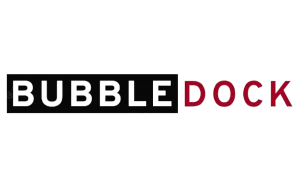India’s lending market witnessed significant growth in the demand for long-term, secured credits, like home loans.
Between March 2013 and 2019, the market for home loan grew by almost 12% in the top seven cities in the country, while the rest of India witnessed a steady growth rate of about 19%.
- India’s home loan market grew at a CAGR of 16% over the last six years.
An incredible credit-savvy generation forming the majority of the prospective customers of such credits, often opts for housing loans for such large scale purchases, instead of utilising their savings.
With affordable home loan emi, flexible repayment tenure, and borrower-friendly terms, these advances have become one of the most sought-after financial products across India.
- District-wise reports of outstanding home loan issued by commercial lenders (between the period of March 2013 and March 2019) show that the outstanding balance of home loans in the top seven metro cities increased from Rs.1.8 trillion to Rs.3.6 trillion.
Moreover, several recent changes in the rules of lending for home loans also helped to boost the market demand. One of the most crucial of them links the home loan interest rates to an external benchmark.
The updated regulation will be a major factor that affects the rate of interest of a home loan.
The Reserve Bank of India asked all local area lenders, scheduled commercial lenders, and small financing lenders to link interest rates to an external benchmark. Regional rural lenders have been exempted from this rule.
Financial institutions were directed to link their offered interest rates to any of the following benchmarks –
- 6-months Treasury Bill yield introduced by Financial Benchmarks India Pvt. Ltd. or FBIL.
- 3-months Treasury Bill yield introduced by Financial Benchmarks India Pvt. Ltd. or FBIL.
- Repo rate published by the RBI.
Repo or repurchase rate, as one of the most commonly accepted external benchmarks, was readily accepted by most financial institutions. Now, the interest rate on various retails loans is considered as Repo Rate, Linked Lending Rate or RLLR.
According to the latest guidelines published by the RBI for a home loan, it is calculated by adding the margin charged by that particular lender with RBI’s repurchase rate. The Reserve Bank of India reviews the rate every two months, which helps borrowers keep pace with the ups and downs of the financial market.
What is repo rate?
The repo or repurchase rate is a set percentage at which commercial lenders borrow funds from the Reserve Bank of India. The RBI widely uses it as a monetary tool to keep inflation under control. Changes in the rate affect the EMI of a home loan as it impacts the rate of interest as well.
Previously, home loans were offered based on the Marginal Cost of Funds Based Lending Rate, or MCLR. It was revised every year, which meant borrowers had to wait for a significant period to avail the benefits of the reduced interest rate. Home loans were usually availed against a floating rate, which meant a borrower had to wait for a year even if the interest rate immediately fell after they borrowed the credit.
Another common complaint from borrower’s end was that many lenders were unwilling to pass the benefits of a reduction in the rates, although they were prompt in increasing the interest quickly whenever the policy rates were hiked.
Linking the interest to repurchase rate has brought more transparency and faster changes in the key rates. Now, financial institutions are legally required to reset the rate of interest at least once every three months. It conveys the changes in the rate of interest within a short period to every borrower.
Demystifying the effects of MCLR, even small changes in the interest rates of such long-term credits can leave a significant impact on the overall cost, which is why the new system was promptly accepted.
How do changes in the repurchase rate affect home loan interest rates?
An essential benefit of adopting a repurchase rate based lending rate is that it impacts both existing and prospective borrowers. Public sector lending institutions are usually the first ones to change their rates, whereas private financial institutions follow suit by reducing the rate of interest, decreasing the payable home loan EMIs.
Interest rates offered by financial institutions also depend on various other factors, including the financial history of the borrower, their repayment capability, credit score, debt portfolio, age, income, current assets, fixed obligation to income ratio, etc. Factors such as the credibility of their employer and their professional experience are also considered while determining the rate of interest offered to a particular borrower.
Another aspect that is often overlooked is the existing relationship between an applicant and a particular financial institution. An existing customer is likely to secure a better deal than a new applicant.
For example, certain lenders provide pre-approved offers to their existing customers applying for a home loan. These offers simplify the application process and help save time. Also, these offers are available on several financial products, like loans against property. One can check his/her pre-approved offer by sharing only some essential details online.
While at it, selecting a lender with the help of a home loan EMI calculator can help arrive at a suitable financing option for house purchase.
Home loan interest rate as well as its EMIs will thus get typically affected by the repurchase rate based lending rate. While borrowers are most likely to benefit from it, any increase in the rate is also likely to reflect in the applicable interest rate within a short period.



















